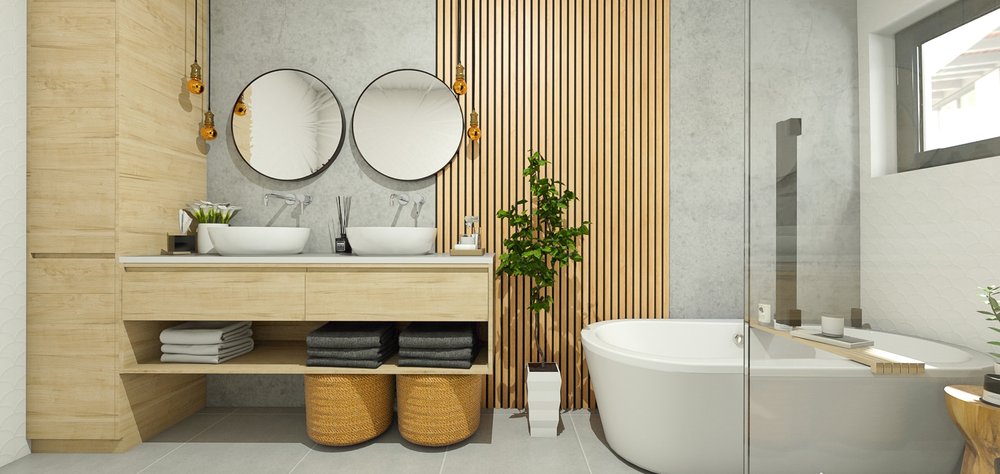How 3D planning can help support international expansion for bathroom retailers
E-commerce is an undeniably effective facet of a bathroom retailer’s global expansion strategy.
It is providing readily scalable opportunities to increase revenue and brand awareness without the risk or overheads of establishing a new physical presence.
At the same time, consumers looking to explore the full range of products available online are no longer limiting themselves by geography, including international retailers in their search for competitive pricing and even greater choice. In line with faster logistics processes and international fulfillment, there is also an increasing acceptance of international e-commerce amongst consumers; a shift in line with market predictions that China will become the world’s biggest economy by 2028. (Source: CEBR)
Yet, while it’s true that global e-commerce offers huge expansion opportunities, retailers nevertheless remain under intense pressure from both local and international competitors when entering the global market arena. Solutions are needed that will differentiate retailers from the competition while helping to build brand awareness if e-commerce is to fulfill its potential as an enabler for international expansion.
The role of e-commerce in successful expansion strategies
With e-commerce sales surpassing $4.2 trillion worldwide in 2020, the popularity of online shopping continues to soar. (Source: Statista) By 2024, it is estimated that e-commerce will value at $6.3 trillion, with an additional 1.8 billion consumers spending $30 trillion annually by 2025. (Source: McKinsey)
For bathroom retailers, there is vast scope to tap into this intense purchase power of a global online audience, but to do so requires more than an online catalog. To maximize the opportunities available, retailers need to fully explore new territories, testing the market demand and gaining an understanding of the specific shopping preferences and behaviors linked to each region. By pursuing global expansion online, the costs and risk to retailers are much lower than launching straight into physical stores, gaining access to a new customer base where product offerings can be adequately tested and built upon based on firsthand data and insight.
When expanding an online presence, retailers need to first establish their key USPs relating to their brand offering in each region, and in order to do this, market intelligence is also crucial. By assessing the locations where international demand exists and mapping out customer product preferences and shopping behaviors accordingly, retailers can build out the most effective long-term strategies. This could include remaining online, exploring opportunities with local retailers, the introduction of a brick and mortar store, or perhaps a more sophisticated ‘endless aisle’ investment.
But wherever the market, it is sure to be heavily saturated – meaning that brands need to differentiate their offerings from competitors in order to be seen by consumers. An engaging customer experience is key to attracting new customers to an otherwise unknown name and encouraging casual browsers to stay on the site and, ultimately, complete a transaction. Buying bathroom retail goods is, by its very nature, a personal and interactive process. With different textures, materials, and styles to observe, online retailers are challenged with providing an equally engaging sensory experience online through only visual aids such as photographs or 3D imagery.
Exploring new geographies with 3D planning
When building out global brand awareness and a new customer base it is crucial that all strategies specifically cater for the target area and demographics. By incorporating a 3D planning solution such as HomeByMe Bathroom Planner, brands can both explore the market and strengthen their e-commerce offerings through access to real-time customer insights that are specific to each geographic region.
The solution can provide data such as the most common product styles and selections, average checkout values, and sales conversion rates, which can be used to confirm and perfect the product range on offer. This data and insight can be used to better inform buyers and to optimize e-commerce sites, placing popular items in prominent positions to maximize conversions in each region and display an in-depth understanding of the market’s preferences.
3D planning solutions are particularly effective in building consumer confidence for design ideas ahead of committing to a purchase due to hyper-realistic 3D renderings of products alongside in-depth item descriptions and specs. By offering accurate representations of how products will integrate into full room layouts tailored to the user’s exact dimensions, the retailer can replicate the in-store experience from the convenience of the user’s own home anywhere across the globe, at the same time reducing costly errors or returns.
Finally, bathroom retailers can demonstrate their exceptional customer service by personalizing customer interactions based on the data collected from online profiles, securing a positive brand reputation ahead of greater investment into a brick and mortar store.
Building brand awareness and entering new markets
The rise of global e-commerce presents great opportunities for bathroom retailers to expand globally, but the challenge remains to raise brand awareness and enter new markets as quickly as possible. With crucial market insight and value-added service from solutions such as 3D planning, brands can better inform and develop their expansion strategies and gain faster traction with less investment.
To further explore how 3D planning solutions can support global expansion for your bathroom retail brand, visit our website built specifically to serve bathroom retailers where you can organize a demonstration of the platform with a member of expert team.
